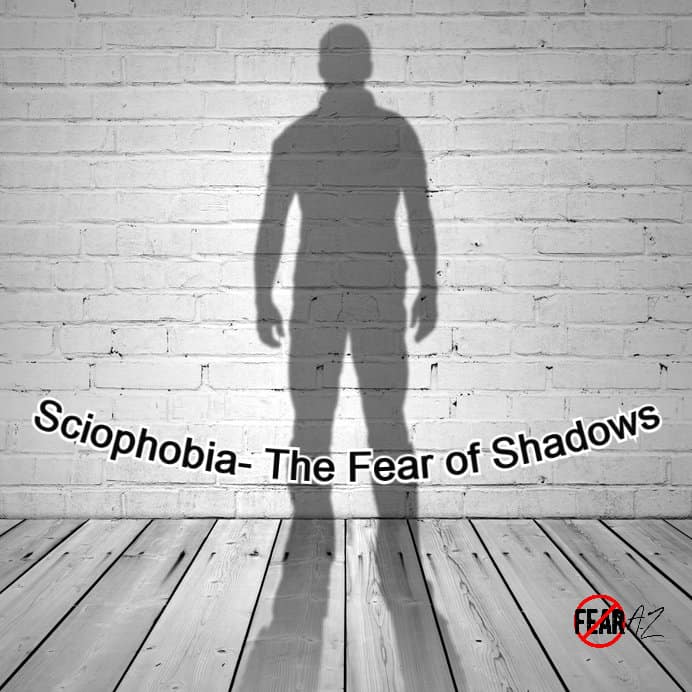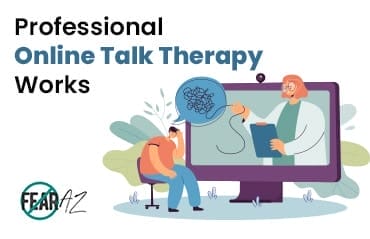Share This Article
Do You Fear Shadows?
Do you consciously avoid shadows? Would you rather stay home during the day than come across a shadow? Do you avoid rooms lit only by lamplight, because you can’t stand shadows reflected on the wall?
Do you decline night strolls in the park because moving shadows of trees make you feel uneasy? You might even change your route home at night to avoid certain shadows.
Imagine being scared by shadows, including your own. Others might not understand how difficult it is to live with the constant fear of shadows, but you do.
What is it called when you’re afraid of your own shadow? The term for a fear of shadows is sciophobia.
Shadows are everywhere. They’re near impossible to avoid. That means you’ll have to find a way to live with them. Begin by remembering this: Shadows are harmless reflections of objects. You can overcome your fear if you try.

What Is Sciophobia All about?
What is sciophobia? Simply put, it’s a fear of shadows. According to the Diagnostic and Statistical Manual of Mental Disorders, DSM-V, it’s a specific phobia that falls under anxiety disorders.
Sciophobia covers any irrational fear of shadows, including your own. In most cases, sciophobia develops when one is a child. In some cases, sufferers may overcome it as they grow up. Unfortunately, not everyone outgrows sciophobia.
Sciophobia can be so extreme that a mere thought of shadows can trigger fear in individuals. A sufferer might know that the fear is irrational, but they are unable to control themselves. Now that you know sciophobia exists, you might be wondering what are some sciophobia causes? There are a few possible triggers.
Genetics
Is there is a history of anxiety disorders in your family? If so, you’re more likely to develop a phobia such as sciophobia. You’re also likely to develop other anxiety disorders. In your case, there’s a genetic predisposition which increases your risk for developing such disorders. The fear may not be awakened until you’re exposed to a stimuli. Stimuli may include a specific trigger provoking fear of shadows, for instance, a scary movie about ghosts and shadows. If a parent has sciophobia, they may pass it on to their child. A child may observe the parent running from a shadow and register in their minds that the shadow is harmful.
Past Traumatic Experiences
Do you remember an event that changed your perception of shadows? Most phobias stem from a distressing past event. Like they say, once bitten, twice shy. With sciophobia, a simple incident like watching a film, where a person was frightened or chased by a ghostly shadow, is enough trigger. Some also see mysterious figures in their dreams. Films, books, and tales about ghosts can push you into perceiving ghostly shadows wherever you go.
Environmental Factors
Your surroundings play a huge role in the type of person you become. What did your environment cause you to believe about shadows? What tales are told in your culture about darkness, ghosts, and shadows? If you’re afraid of the dark, you could be easily fearful of shadows.
Symptoms of Sciophobia
Symptoms of sciophobia are varied and can be either physical, mental, or emotional. To be diagnosed with sciophobia, you should have at least some of the symptoms below for a period not less than six months.
Mental/Emotional Symptoms
- Lack of logical reasoning
- Getting out of touch with reality
- Sudden intense fear when you see a shadow
- Wanting to run away from a shadow
- Uncontrolled intense emotions
- Sleeping difficulties
- Drowsiness during the day
- Panic attacks
Physical Symptoms
- Increased heart rate
- Shortness of breath
- Sweating
- Shaking and trembling due to fear
- Nausea
- Dry mouth
- Intense headaches
- Avoiding dark places
- Asking someone to accompany you to places you would normally go alone, like the bathroom
- Screaming when exposed to shadows
Self-Help Tips to Treat Sciophobia
Sciophobia treatment is needed if your everyday life is negatively affected by a fear of shadows. You can do what you can for yourself to begin with. Here are some tips you can try at home, or with the help of someone close:
Take Care of Yourself
Eat healthy food and live a healthy life. Try to get some physical activity each day and get enough rest. Avoid caffeine as it can worsen your anxiety and escalate feelings of fear. While focusing on being healthy, your focus will be shifted to what is essential.
Reach Out
Talk with someone close to you, like a relative or a close friend. You don’t need to suffer alone. You can also consider joining support groups with people going through the same thing as you. In the group, you’ll be free to speak without fear of being judged. You’ll also receive tips that could enable you to live and cope better.
Try Not to Avoid Situations
Let it register in your mind that your fear of shadows is irrational. Face your fears. Practice being in a space where you usually feel safe, but occassionally see shadows. Observe the shadows for short periods of time, extending that time as you grow more comfortable. Go outside when it’s dark and face that dull-looking figure in your own shadow. It won’t be easy at first, but with time, you’ll make progress.
Professional Treatment Is Another Option
Professional treatment methods come in different forms of therapy. Let’s explore some of them.
Exposure Therapy
As the name suggests, exposure therapy exposes you to the very thing you dread: shadows. In a safe environment, a therapist will walk you through stages of exposure. Step by step, day by day, you’ll eventually be able to face a shadowy figure no matter how large. All the therapist will require from you is your cooperation and willing attitude.
Talk Therapy
Talk therapy is all about speaking your mind to a health professional. As you talk, the therapist will gather the necessary information about where your anxiety stemmed from. They’ll also collect information about what you dread. Using this information, the therapist will guide you through recovery.
Mindfulness-Based Stress Reduction (MBSR)
Mindfulness-based stress reduction is an eight-week program. The program, which also includes group sessions, is all about meditation. In mindfulness meditation, you’ll focus on something completely different from your fear. The whole purpose is to distract you from that fear. For instance, you may be required to take tea and concentrate on its smell and taste. The therapist will then ask that you describe your feelings. While you focus on things that are different from what you fear, you build up some capacity to ignore the fear. If a fear can be ignored, it may be forgotten.
Medication
Medication is effective in treating the physical symptoms that sciophobia causes. In about two weeks, you should see a reduction in those symptoms, though you’ll need to continue with other forms of therapy to address the fear itself.
How to Avoid Sciophobia Altogether
Some phobias and fears have some degree of rationality in them. For example, consider the fear of death or the fear of poison. While you can be poisoned, death is inevitable. Similarly, trying to reason with yourself that shadows will never cause you any harm can help you cope with your fear. Sciophobia cannot impact you if you don’t allow it to affect your rationality.
Overcoming Sciophobia Is Possible
Those with sciophobia tend to fear shadows because they appear larger than actual objects. If you let the fact that shadows are harmless sink in, your recovery journey will begin. Combine several treatment methods if you need to, as long as you recover. Above all, don’t self-medicate. Let a health professional guide you to a life without the fear of shadows.




